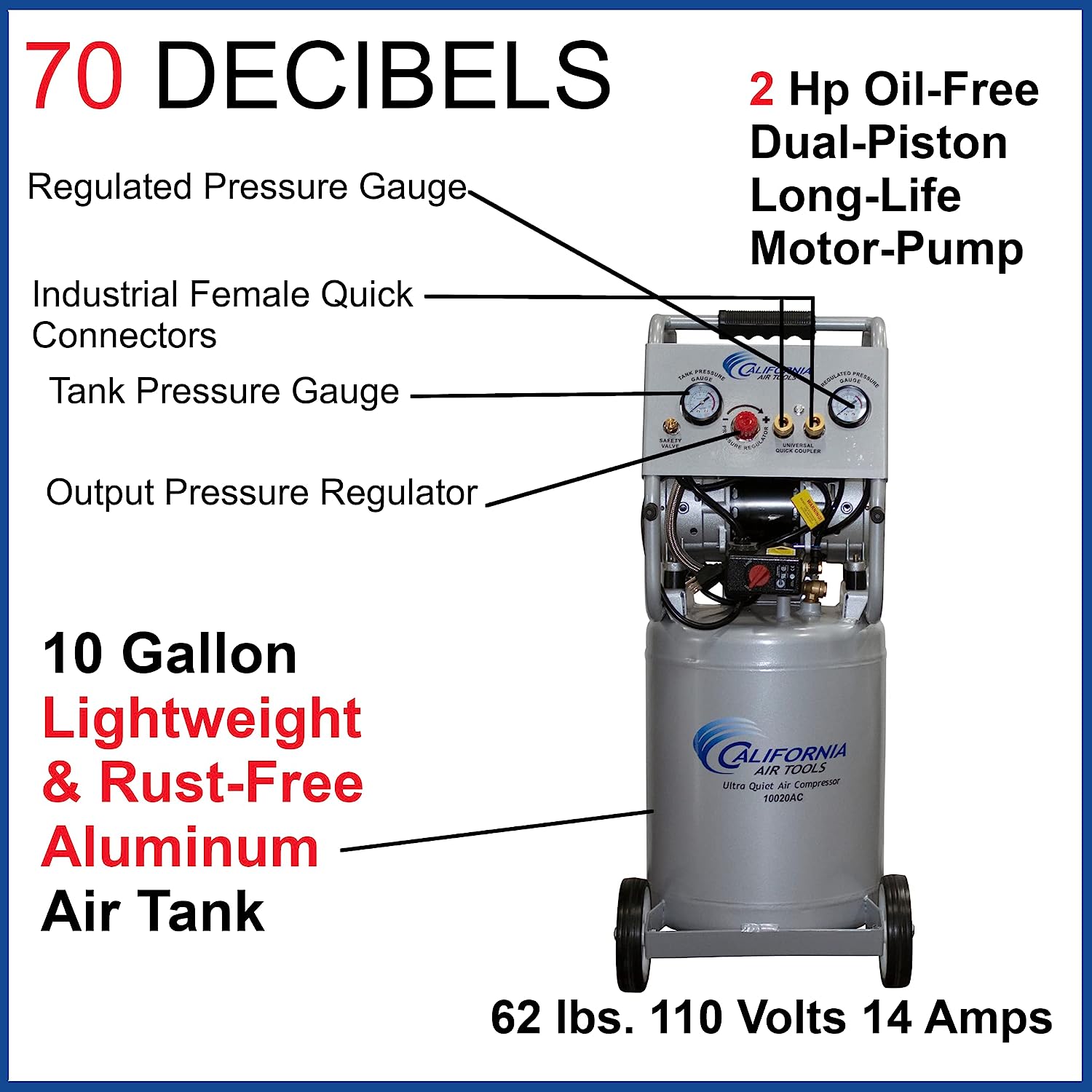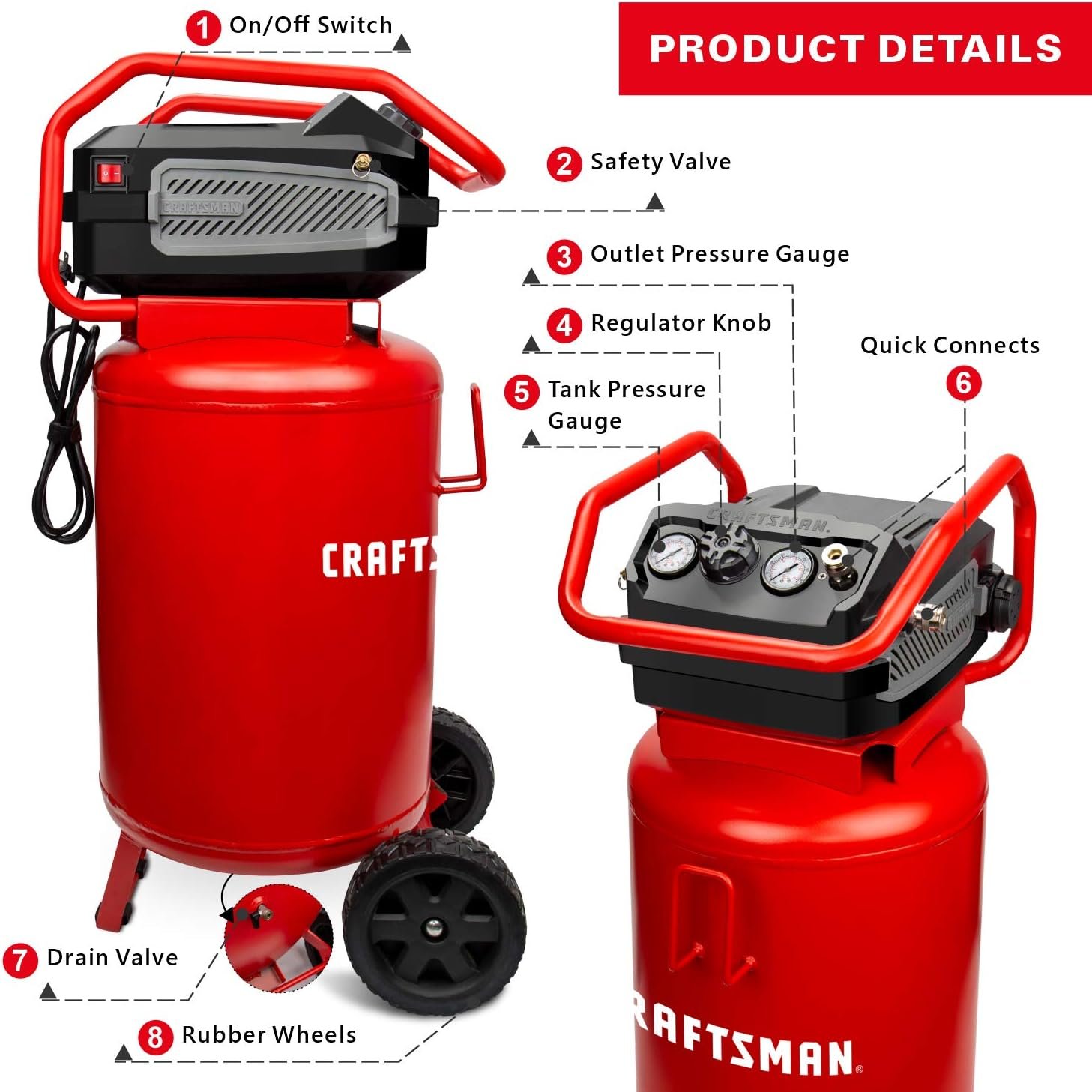In this informative guide, you will discover all you need to know about determining the ideal CFM (cubic feet per minute) for your air tools. Wondering how to calculate the correct CFM for your specific tools? Whether you’re a DIY enthusiast or a professional, this article will provide you with the essential knowledge to ensure optimal performance and efficiency for all your air-powered projects. So, get ready to take your understanding of CFM to new heights and make the most out of your air tools!
Understanding CFM
What is CFM?
CFM stands for Cubic Feet per Minute, and it is a unit of measurement used to quantify the airflow rate of an air tool or a compressor. CFM measures the volume of air that an air tool requires or a compressor can deliver. This measurement is crucial in ensuring that the air tool receives the necessary airflow to perform optimally.
Why is CFM important for air tools?
CFM is vital for air tools because it determines the tool’s performance and efficiency. Insufficient CFM can lead to underpowered tools that can’t perform their tasks effectively. On the other hand, having excess CFM may not necessarily be beneficial either. It is important to have a balance between the tool’s requirements and the CFM provided by the compressor to avoid wastage of energy and resources.
Factors that affect CFM requirements
Several factors influence the CFM requirements of air tools. Some of these factors include the tool’s size, the nature of the task, and the frequency of use. Large tools, such as sanders or grinders, typically require higher CFM compared to smaller tools like nail guns. The intensity and duration of use also play a role in determining the CFM requirement. Continuous use of a tool may require higher CFM to prevent overheating and maintain optimal performance.
Identifying Air Tool CFM Requirements
Determining CFM for specific air tools
To determine the CFM required for a specific air tool, you can usually find this information in the tool’s manual or specifications. CFM requirements can vary significantly between different tools and models. It’s essential to consider the maximum CFM requirement of the air tool to ensure that it can operate effectively.
Considerations for continuous use
If you plan to use an air tool continuously for an extended period, it’s crucial to consider the tool’s continuous CFM requirement. This value indicates the CFM needed to sustain continuous operation without causing overheating or performance issues. Neglecting continuous CFM requirements can lead to premature tool failure.
Estimating total CFM requirement
If you have multiple air tools that you intend to use simultaneously or consecutively, you need to calculate the total CFM requirement. To estimate the total CFM requirement, add up the CFM requirements of all the tools you plan to use. This calculation will ensure that you choose an air compressor that can meet the combined demands of your tools.
Calculating CFM
Step 1: Identifying air tool CFM consumption
To calculate CFM, you need to know the CFM consumption of your air tools. As mentioned earlier, you can find this information in the tool’s manual or specifications. Once you have the CFM consumption value, make a note of it for the calculation.
Step 2: Factoring in duty cycle
The duty cycle refers to the percentage of time an air tool is actively in use during a given period. It’s crucial to consider the duty cycle when calculating CFM requirements, especially for tools that will be used continuously. Multiply the CFM value by the duty cycle percentage to adjust the CFM requirement accordingly.
Step 3: Combining CFM requirements for multiple tools
If you have multiple tools that you plan to use simultaneously, add the CFM requirements of each tool together. Keep in mind the duty cycle for each tool if they will be used continuously. This combined CFM value will help you determine the appropriate air compressor for your needs.
Step 4: Adding buffer for additional air demand
Sometimes, it is a good idea to add a buffer to your CFM requirements to accommodate any additional air demand. This buffer allows for unexpected fluctuations in air usage or for potential future tool additions. Adding a buffer ensures that your air compressor can handle the total CFM demand even in unforeseen circumstances.
Assessing Air Compressor CFM Ratings
Importance of compressor CFM rating
The CFM rating of an air compressor is a crucial specification to consider when selecting the right compressor for your air tool needs. The CFM rating indicates the maximum airflow output that the compressor can deliver. It is essential to choose a compressor with a CFM rating that meets or exceeds the total CFM requirements of your tools to ensure optimal performance.
Understanding displacement CFM vs. delivered CFM
It’s crucial to differentiate between displacement CFM and delivered CFM when assessing air compressor ratings. Displacement CFM refers to the theoretical maximum airflow that the compressor can produce, assuming there are no losses or restrictions. On the other hand, delivered CFM is the actual airflow delivered to the tools, accounting for factors such as pressure drops and inefficiencies. When comparing compressor CFM ratings, focus on the delivered CFM for a more accurate representation of its capabilities.
Evaluating compressor capacity for tool requirements
When selecting an air compressor, it’s important to evaluate its capacity in relation to your tool requirements. Ensure that the compressor’s CFM rating is sufficient to handle the maximum CFM requirements of your tools, taking into account any adjustments needed for duty cycle or additional air demand. Choosing a compressor with ample capacity will prevent performance issues and prolong the lifespan of your tools.
Considering Operating Pressure
Understanding PSI and air tool performance
PSI, or pounds per square inch, refers to the measurement of pressure at which air is delivered from the compressor to the tool. Different air tools have varying PSI requirements for optimal performance. It’s essential to ensure that the air compressor can provide the necessary PSI for the tools you plan to use. If the operating pressure falls below the tool’s required PSI, it can result in insufficient power and subpar performance.
Adjusting CFM for different operating pressures
The CFM requirement of an air tool can vary depending on the operating pressure. Some tools may have different CFM ratings at different operating pressures. When calculating CFM requirements, it is essential to consider the operating pressure specified for the tool and adjust the CFM accordingly. Adhering to the correct CFM requirement at the designated pressure will ensure optimal tool performance.
Adjusting for Ambient Conditions
Temperature and its effect on CFM
Temperature can have an impact on CFM calculations. Colder air is denser and contains more oxygen compared to warmer air. As a result, CFM requirements may be slightly different in different temperature conditions. If you operate your air tools in extreme temperatures, it’s important to consider these variations and adjust the CFM requirements accordingly.
Humidity considerations for CFM calculation
Humidity can also affect CFM calculations to some extent. Moisture in the air can cause added resistance and affect the performance of air tools. However, the impact of humidity is generally minimal compared to temperature or pressure variations. It’s good practice to consider the humidity levels in your operating environment, especially in humid climates, but the adjustments needed for CFM calculations are usually minimal.
Selecting the Right Air Hose
Understanding hose diameter and length impact
The diameter and length of an air hose can impact the CFM delivery to your tools. A smaller hose diameter may restrict the airflow, resulting in reduced CFM output. Similarly, a longer hose length can lead to pressure drops and lower CFM delivery at the tool. It’s important to choose an air hose with an adequate diameter and length to ensure that the CFM requirements of your tools are met without significant losses.
Matching hose specifications with CFM requirements
To ensure proper CFM delivery, match the specifications of the air hose with the CFM requirements of your tools and the capabilities of your air compressor. Consider factors like hose diameter, length, and material when selecting an air hose. Choosing the right hose will minimize pressure drops and maximize the CFM delivery, resulting in optimal tool performance.
Beware of Common Mistakes
Overlooking continuous CFM requirement
One common mistake when determining CFM requirements is overlooking the continuous CFM requirement of air tools. Continuous use of tools, especially in certain applications like spray painting or sanding, can demand a higher CFM to maintain optimal performance and prevent overheating. Neglecting the continuous CFM requirement could lead to premature tool failure and inefficient operation.
Neglecting pressure drop considerations
Pressure drops can occur in the air supply system, including hoses, fittings, and filters, and can affect the CFM delivery from the air compressor to the tool. Neglecting pressure drops can result in lower CFM delivered to the tool, affecting its performance. It is important to factor in pressure drops when calculating CFM requirements and design the air supply system to minimize losses.
Using undersized air compressors
Using an air compressor that is undersized for the CFM requirements of your tools can lead to several issues. An undersized compressor may struggle to deliver the necessary CFM, causing reduced tool performance, increased downtime, and potential damage to the compressor itself. It is crucial to select an air compressor that can comfortably meet or exceed the calculated CFM requirements to ensure reliable and efficient operation.
Real-World Examples
Example 1: Determining CFM for a pneumatic drill
Let’s say you have a pneumatic drill with a specified CFM consumption of 6 CFM at 90 PSI. Considering a duty cycle of 75%, you would multiply the CFM requirement by the duty cycle percentage: 6 CFM x 0.75 = 4.5 CFM. Therefore, you would need an air compressor with a minimum delivered CFM rating of 4.5 CFM to power the pneumatic drill effectively.
Example 2: Calculating total CFM for a workshop
Suppose you have a workshop with several air tools that will be used together, including a spray gun (8 CFM), a grinder (5 CFM), and an impact wrench (3 CFM). To calculate the total CFM requirement, add up the CFM requirements of each tool: 8 CFM + 5 CFM + 3 CFM = 16 CFM. Adding an additional buffer of 20%, the total CFM requirement becomes 19.2 CFM. In this case, you would need an air compressor with a minimum delivered CFM rating of 19.2 CFM to power all the tools simultaneously.
Example 3: Adjusting for ambient conditions
Suppose you work in an environment with high temperatures where the CFM requirements are affected. If you have a pneumatic sander with a specified CFM consumption of 10 CFM at 90 PSI, you may need to adjust the CFM requirement based on temperature variations. In hotter temperatures, you may need to increase the CFM requirement by a certain percentage, such as 10%. Therefore, the adjusted CFM requirement would be 11 CFM. Ensure that your air compressor can deliver the adjusted CFM to ensure optimal tool performance.
Final Thoughts
Importance of accurate CFM determination
Accurately determining the CFM requirements for your air tools is crucial for their optimal performance and longevity. Insufficient CFM can result in underpowered tools, while excess CFM can lead to wasted energy. By calculating and matching the CFM requirements of your tools with the appropriate air compressor, you can ensure efficient operation and maximize the lifespan of your tools.
Seeking professional advice if unsure
If you are unsure about determining the ideal CFM for your air tools or have specific requirements, it is always wise to seek professional advice. Consulting with experts in the field can help you make informed decisions and select the right air compressor and accessories for your needs. They can provide guidance on understanding CFM requirements, evaluating compressor specifications, and addressing any unique considerations you may have.
Remember, understanding CFM and its importance is key to optimizing the performance of your air tools and ensuring a smooth and efficient workflow in your projects.










